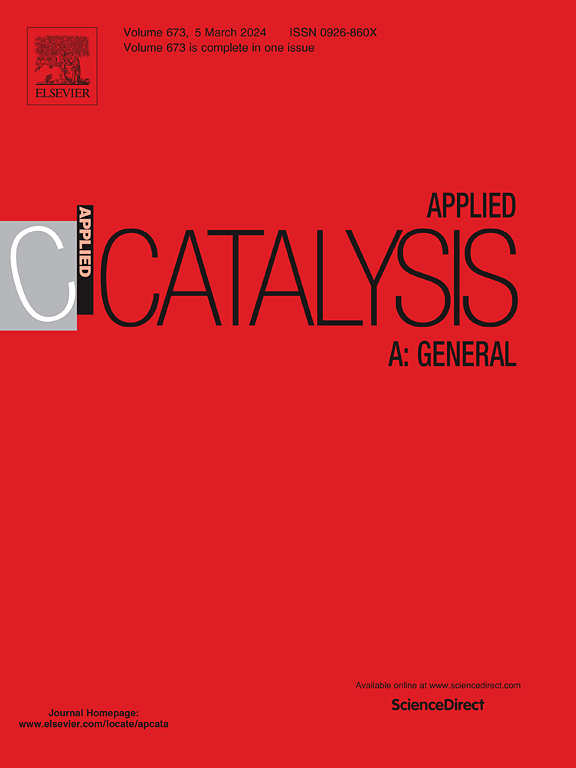层次化多孔S-1沸石负载Pt催化剂在低温下催化氧化多种VOCs,具有较强的耐水性和优异的稳定性
IF 4.8
2区 化学
Q2 CHEMISTRY, PHYSICAL
引用次数: 0
摘要
反应物和产物的高传质阻力限制了硅-1 (S-1)基催化剂对挥发性有机化合物(VOCs)氧化的催化作用。本文以不同浓度的有机碱TPAOH为原料,制备了具有分级孔结构的Pt/S-1催化剂。Pt/ S-1-0.1催化剂经0.1 mol/L四丙基氢氧化铵(TPAOH)预处理后,对苯、正己烷、甲苯、二甲苯、丙烷和丙烯等多种VOCs具有优异的催化氧化活性。适当浓度的有机碱预处理增强了Pt纳米粒子与沸石表面的相互作用,从而促进Pt在沸石表面的分散和锚定。Pt纳米粒子的高分散性和高Pt0物种比例有利于在低温下催化氧化VOCs。此外,由于S-1沸石的疏水性,Pt/S-1 - 0.1催化剂表现出较强的耐水性和优异的稳定性,适用于高水汽含量条件下催化氧化VOCs。本文章由计算机程序翻译,如有差异,请以英文原文为准。
Hierarchical porous S-1 zeolite supported Pt catalyst for catalytic oxidation of various VOCs at low temperature with strong water resistance and excellent stability
The high mass transfer resistance of reactants and products limits the catalytic process of Silicalite-1 (S-1) based catalysts for volatile organic compounds (VOCs) oxidation. In the present work, Pt/S-1 catalysts with hierarchical pore structure were prepared with different concentrations of organic alkali TPAOH. The Pt/S-1–0.1 catalyst pretreated with 0.1 mol/L tetrapropyl ammonium hydroxide (TPAOH) has excellent VOCs catalytic oxidation activity for various types of VOCs including benzene, n-hexane, toluene, xylene, propane and propylene. The proper concentration of organic alkali pretreatment enhanced the interaction between Pt nanoparticles and the surface of zeolites, thus promoting the dispersion and anchoring of Pt on the surface of zeolites. The high dispersion of Pt nanoparticles with high proportion of Pt0 species benefits the catalytic oxidation of VOCs at low temperature. In addition, due to the hydrophobic nature of S-1 zeolite, Pt/S-1–0.1 catalyst shows strong water resistance and excellent stability, which is suitable for catalytic oxidation of VOCs under high-water vapor content.
求助全文
通过发布文献求助,成功后即可免费获取论文全文。
去求助
来源期刊

Applied Catalysis A: General
化学-环境科学
CiteScore
9.00
自引率
5.50%
发文量
415
审稿时长
24 days
期刊介绍:
Applied Catalysis A: General publishes original papers on all aspects of catalysis of basic and practical interest to chemical scientists in both industrial and academic fields, with an emphasis onnew understanding of catalysts and catalytic reactions, new catalytic materials, new techniques, and new processes, especially those that have potential practical implications.
Papers that report results of a thorough study or optimization of systems or processes that are well understood, widely studied, or minor variations of known ones are discouraged. Authors should include statements in a separate section "Justification for Publication" of how the manuscript fits the scope of the journal in the cover letter to the editors. Submissions without such justification will be rejected without review.
 求助内容:
求助内容: 应助结果提醒方式:
应助结果提醒方式:


